This section covers the Honeyeater species which are primarily nectar feeding birds but also feed on insects as part of their staple diet. They are generally active, noisy and pugnacious birds and strongly defend their feeding territories.
Around The Cape, the wattlebirds are comfortable within the streetscape and house gardens, while the smaller honeyeaters tend to confine themselves to the south east and south west sectors and coastal reserve habitats.
White-eared Honeyeater (Nesoptilotis leucotis)
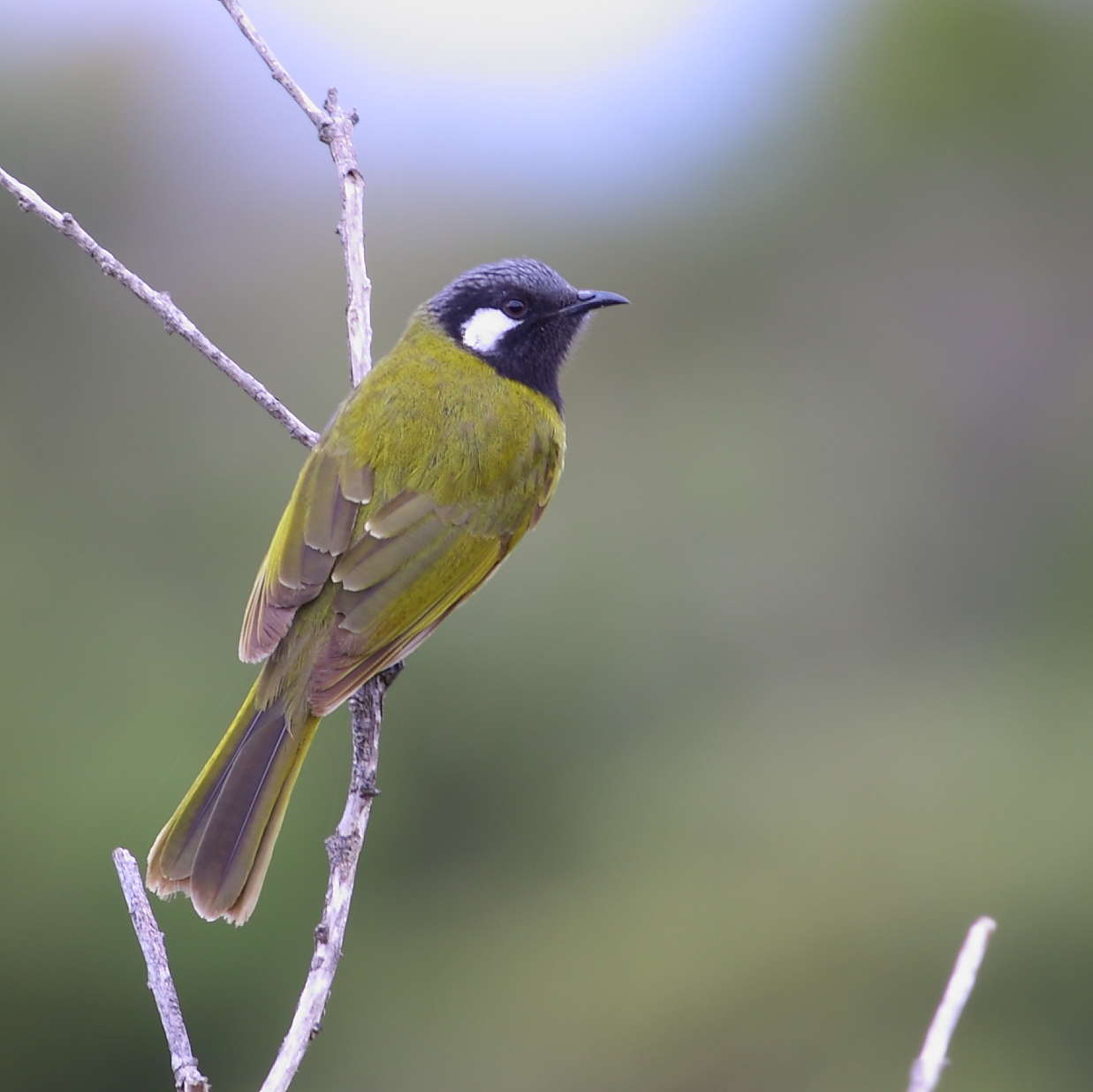
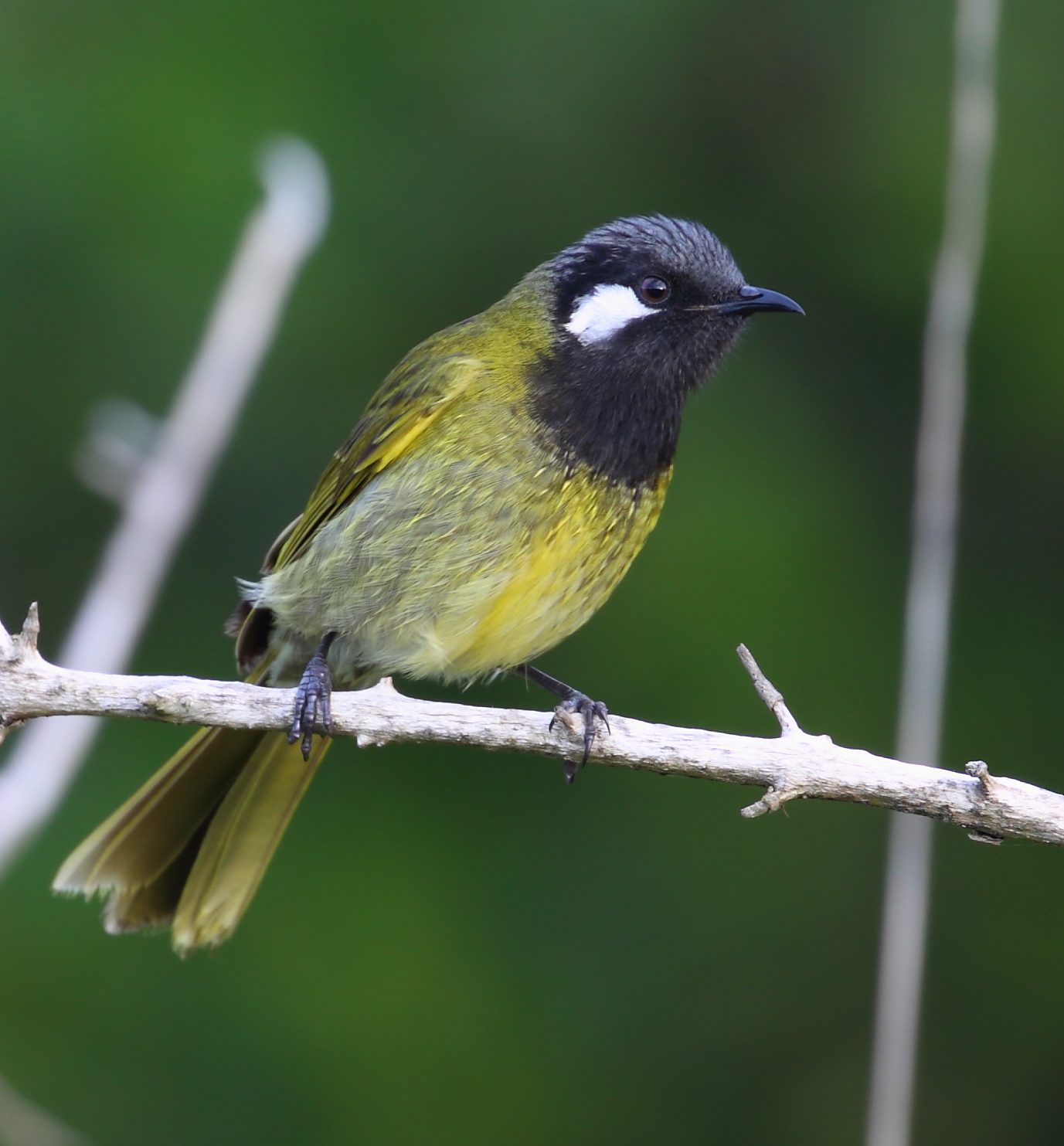
A lovely medium sized honeyeater, most likely seen during the cooler months when it moves out of the higher range country. Mainly seen within the coastal reserve and south east sector, but is also spotted in road side vegetation along Seaward Dve and Wilson’s Rd. It is the only honeyeater that has been spotted deep within the housing area of The Cape. Olive-yellow colourings with a black head and distinctive white neck patch behind the eye. Like most honeyeaters, will often fly to an open branch and call when it is the best time to see them.
Yellow-faced Honeyeater (Caligavis chrysops)
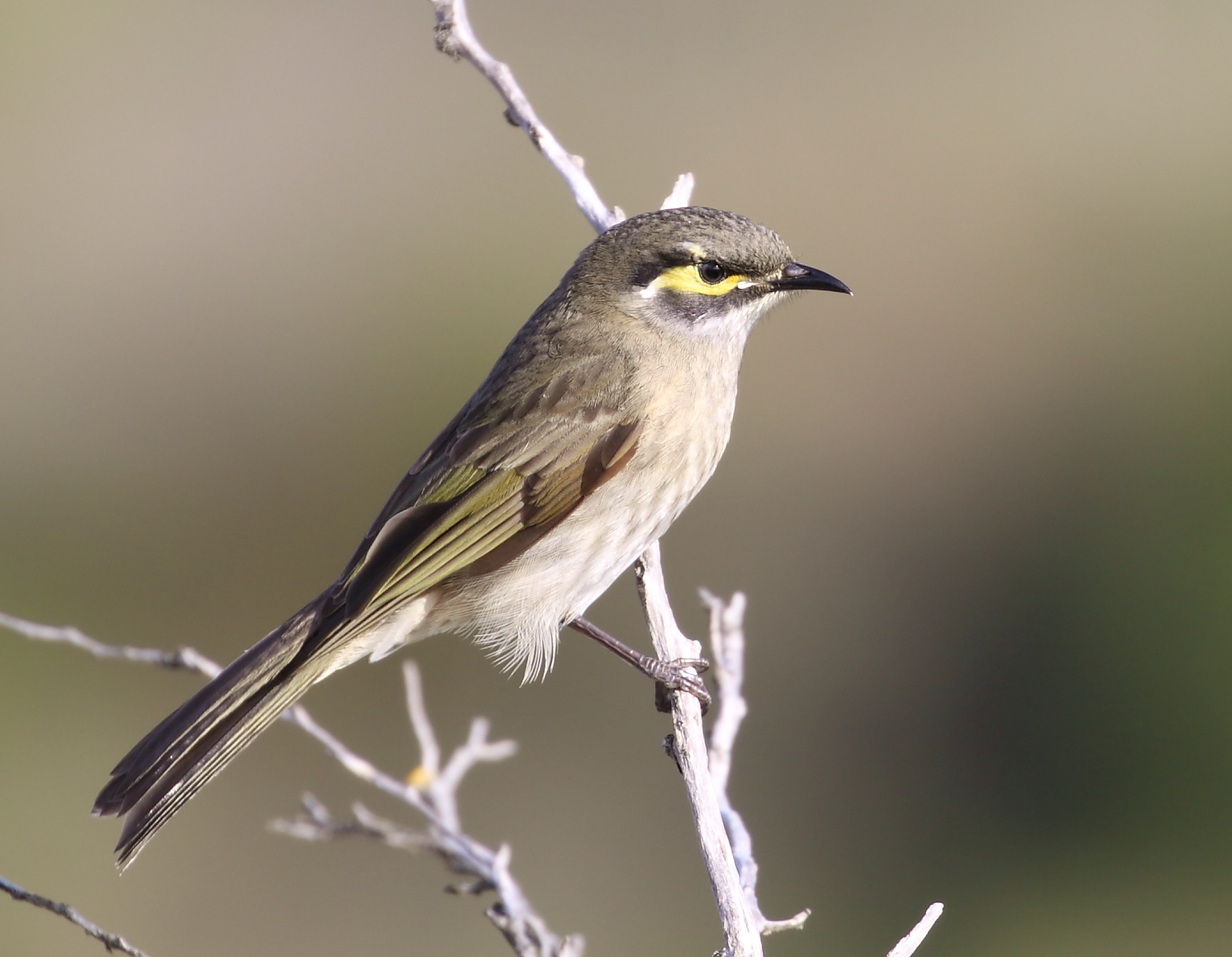
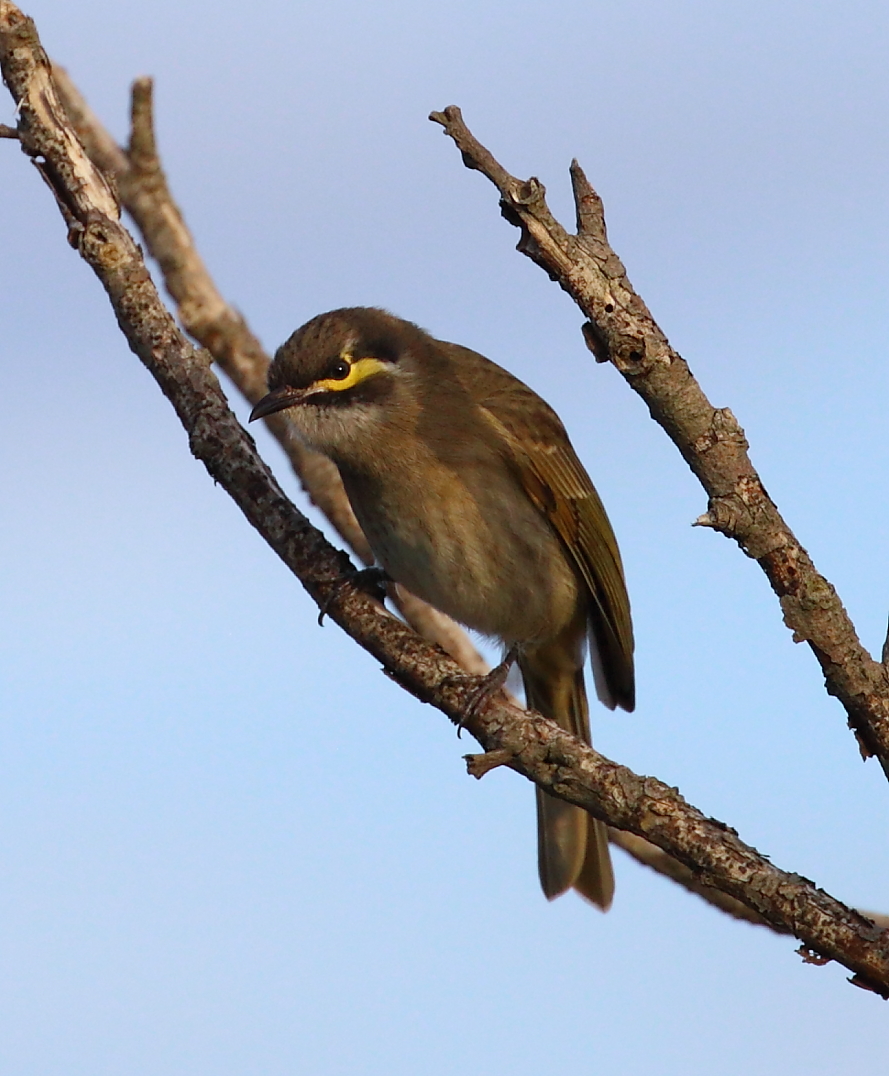
Similar in size to the White-eared Honeyeater, a reasonably common species at The Cape. Predominantly grey-brown in colour with a distinctive yellow-black facial strip. It occupies the same habitat as the White-eared and has similar behaviours. They are less numerous in numbers during winter while some birds migrate north, but they can be observed regularly throughout the warmer months. An energetic, active bird.
New Holland Honeyeater (Phylidonyris novaehollandiae)

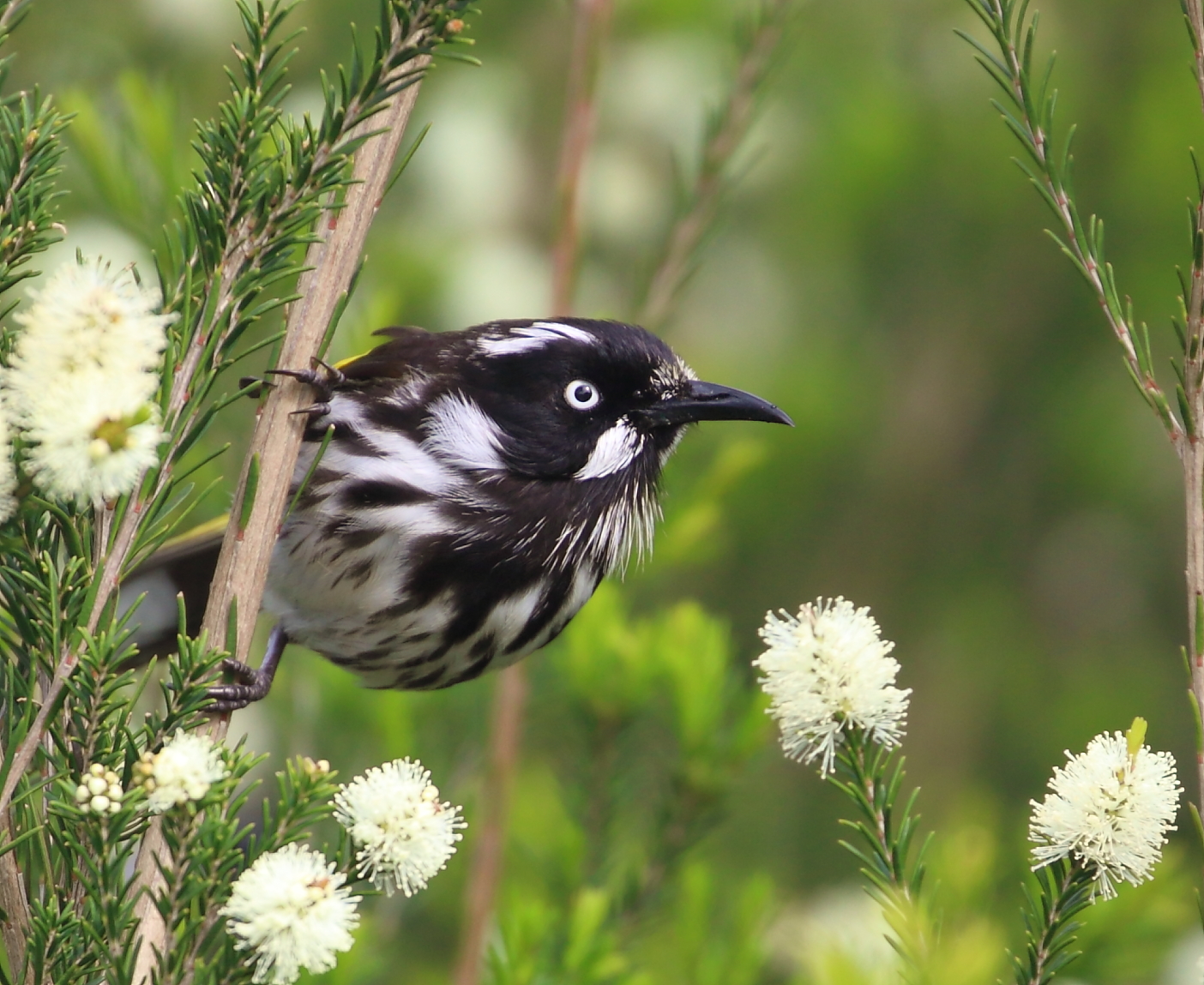
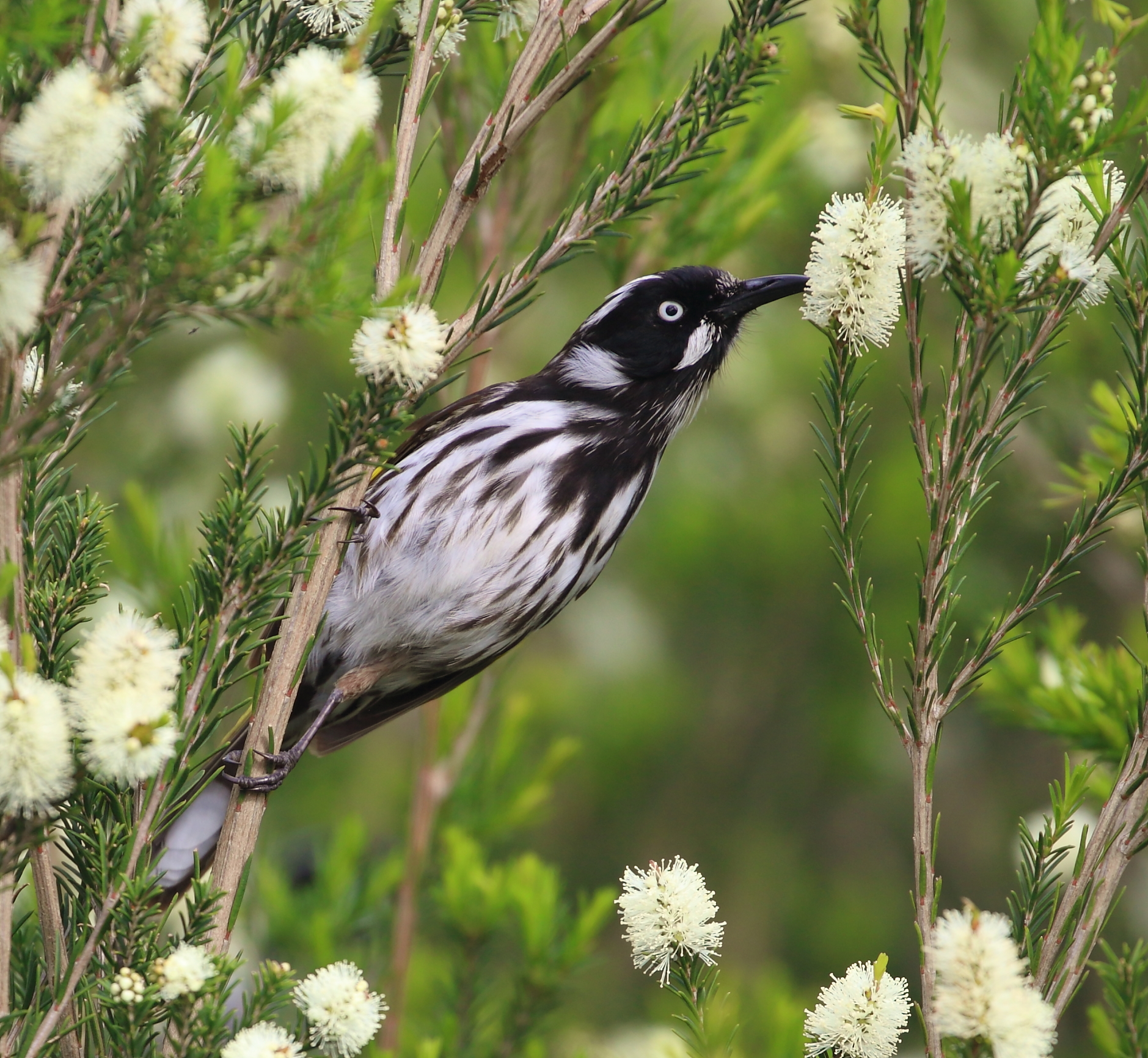
This is The Cape’s most common honeyeater and it is at home amongst the heathland and coastal woodland. Seen regularly in the south east sector and on the edges of the coastal reserve and often flies between The Cape and Cape Paterson hamlet. It is likely to be the first small honeyeater (other than the wattlebirds) to move into the housing environment.
Both sexes have the same plumage, predominantly black and white with yellow edges to the wing and tail. Extremely active and noisy in small groups, especially in spring when melaleuca blossom is at its peak flowering and nectar is rich. When feeding, their tongue extends into a blossom at ten times per second to obtain the nectar fluid. They do eat insects as well. They aggressively defend their nectar territory. Often seen flying from bush to bush, chasing each other and darting into cover, and most conspicuous when perched on open vegetation calling louding.
This bird also performs an interesting group behaviour – a ‘corroboree’ – which I have been lucky enough to see on the edge of the coastal reserve in the south east sector, involving about 15 birds. A ‘corroboree’ involves a group of more than two birds in very close proximity, repeatedly calling and fluttering their wings.
Little is known about why these birds perform ‘corroborees’, but it appears an individual bird initiates the gathering and others join in. The birds are usually all adult males. One thought is that the behaviour coincides with the return of birds to an accustomed physical environment (territory) after a period of absence and is a way of recognising neighbours and others in the group by congregating in a non-aggressive way.
Crescent Honeyeater (Phylidonyris pyrrhopterus)
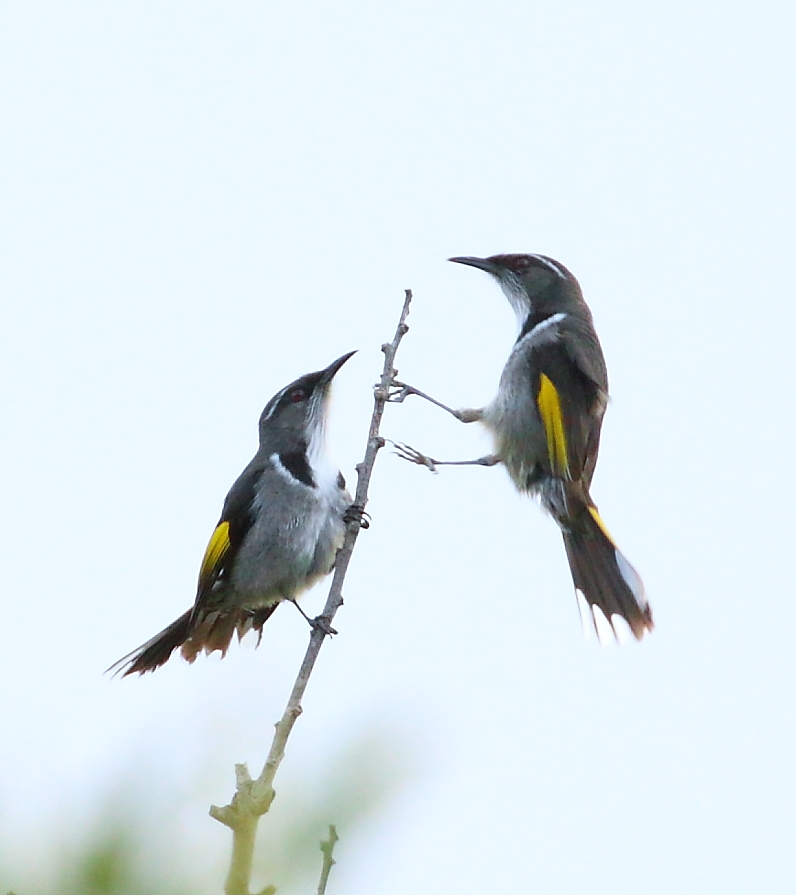
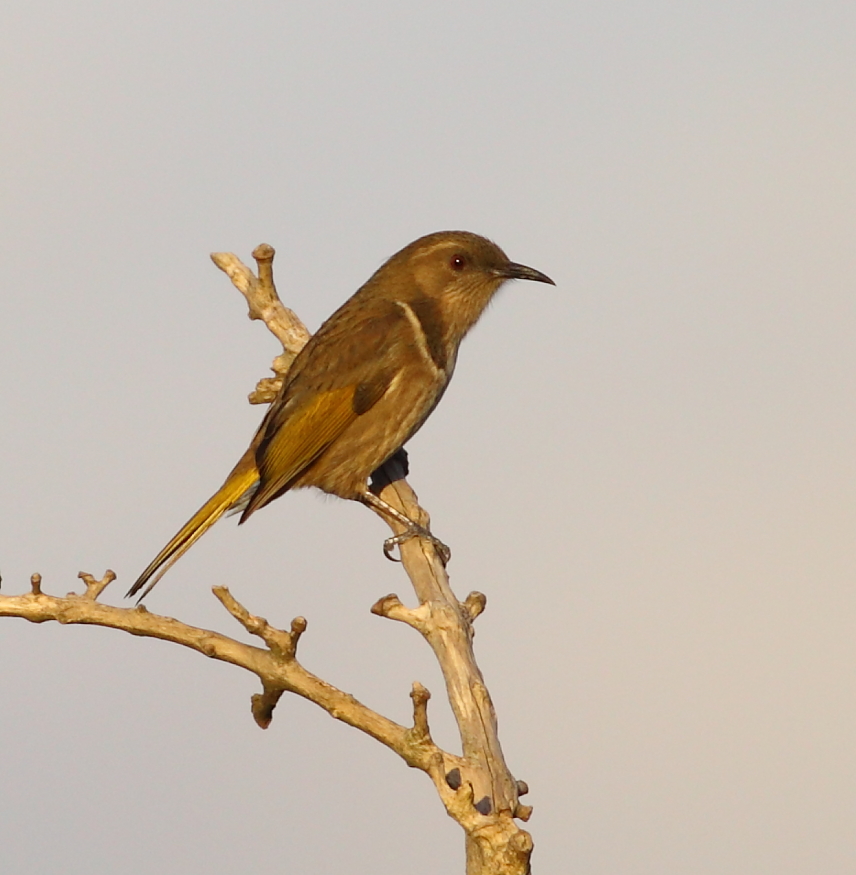
One of my favourite honeyeaters, the Crescent is slightly smaller than the New Holland and less conspicuous. Reasonably common at The Cape but is less common on the Australian mainland and more at home in Tasmania. Like most honeyeaters, it is noisy, active and very fast. Best places to see it are along the edges of the coastal reserve and in the south east sector where it feeds on nectar but also probes under bark for insects.
Each sex has different plumage. The male is mainly grey-brown, yellow wing edges, black head with white streak and distinctive white crescent marking on the chest. The female is more olive-brown, duller yellow wing edges and lacks the black tones on the head and chest.
Eastern Spinebill (Acanthorynchus tenuirostris)
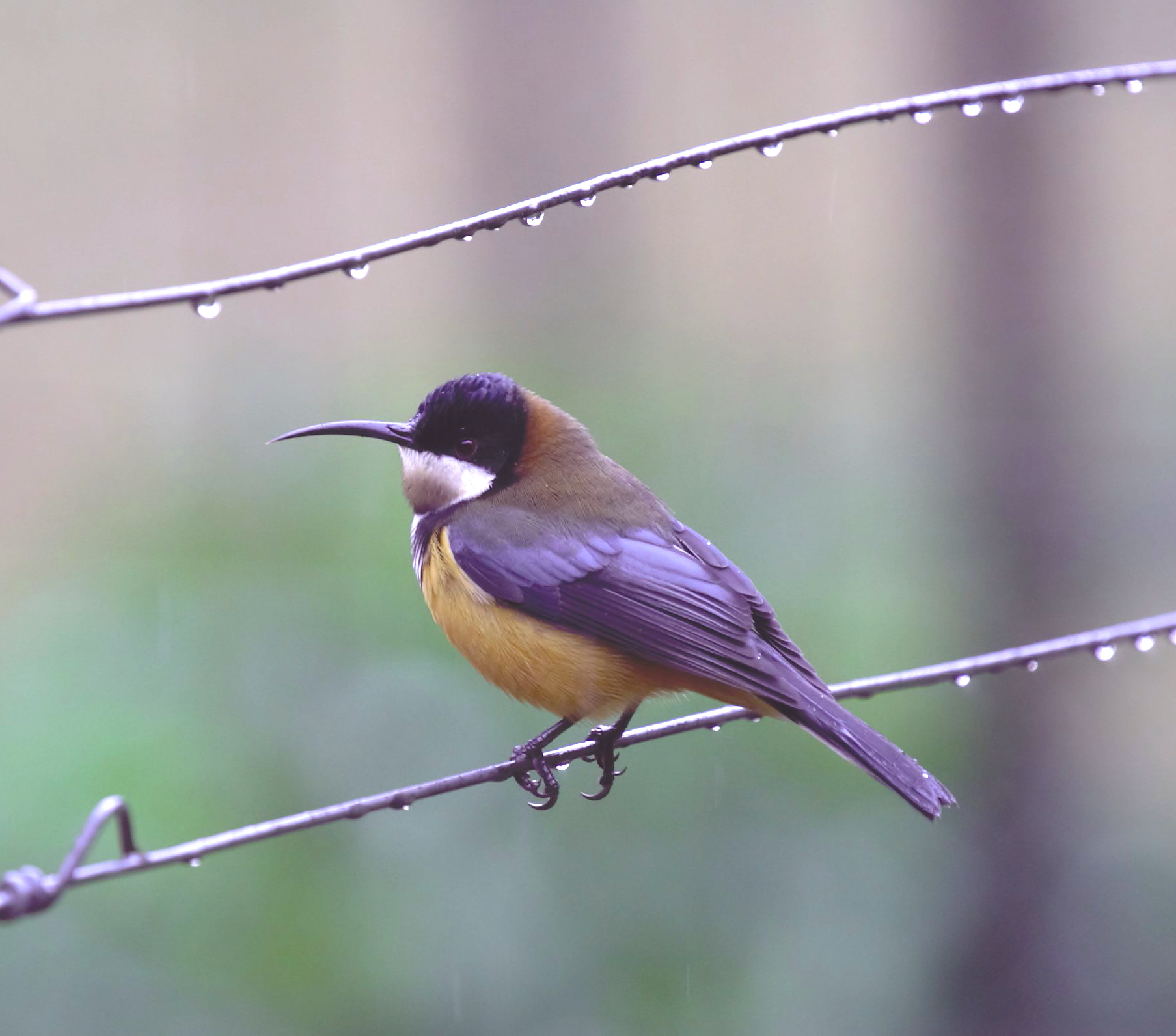
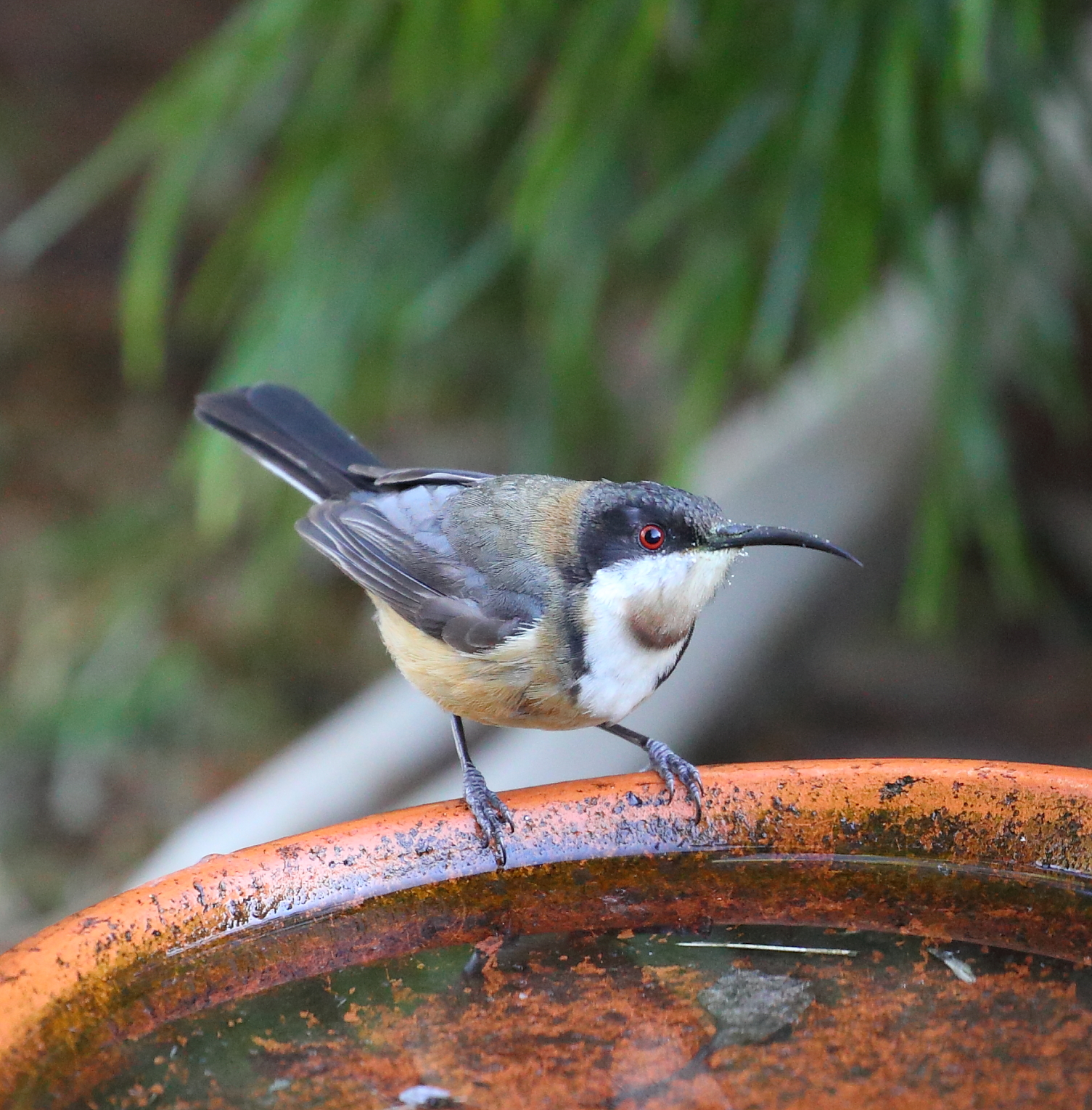
An infrequent winter time visitor to The Cape usually seen as a single bird. The best place to see it is along the exit track through the south east sector where it can be seen flying and feeding between The Cape heath and home gardens in ‘old Cape’. A small, stunning bird with a long down-curved shaped bill used to probe deep in flowers for nectar. Also noisy and pugnacious but less so than the New Holland.
Little Wattlebird (Anthochaera chrysoptera)

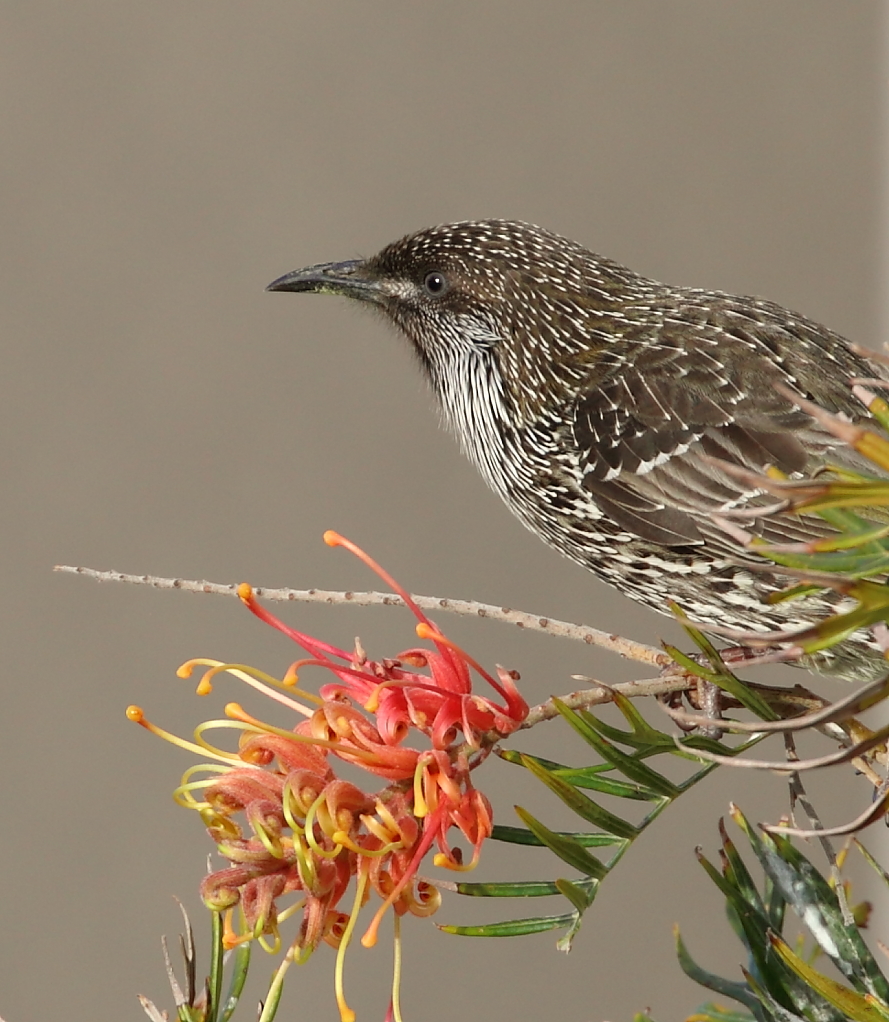
The smaller of the two wattlebird species at The Cape, this bird is quite at home among the heath and coastal woodland, especially attracted to banksia and melaleuca. Extremely noisy, territorial and pugnacious. Seen right throughout The Cape habitats other than the open spaces and is quite at home among the streetscapes as well. Has a beautiful, quill like plumage with light brown, grey and white colourings. A nectar bird but also actively seeks out insects and spiders.
Red Wattlebird (Anthochaera carunculata)

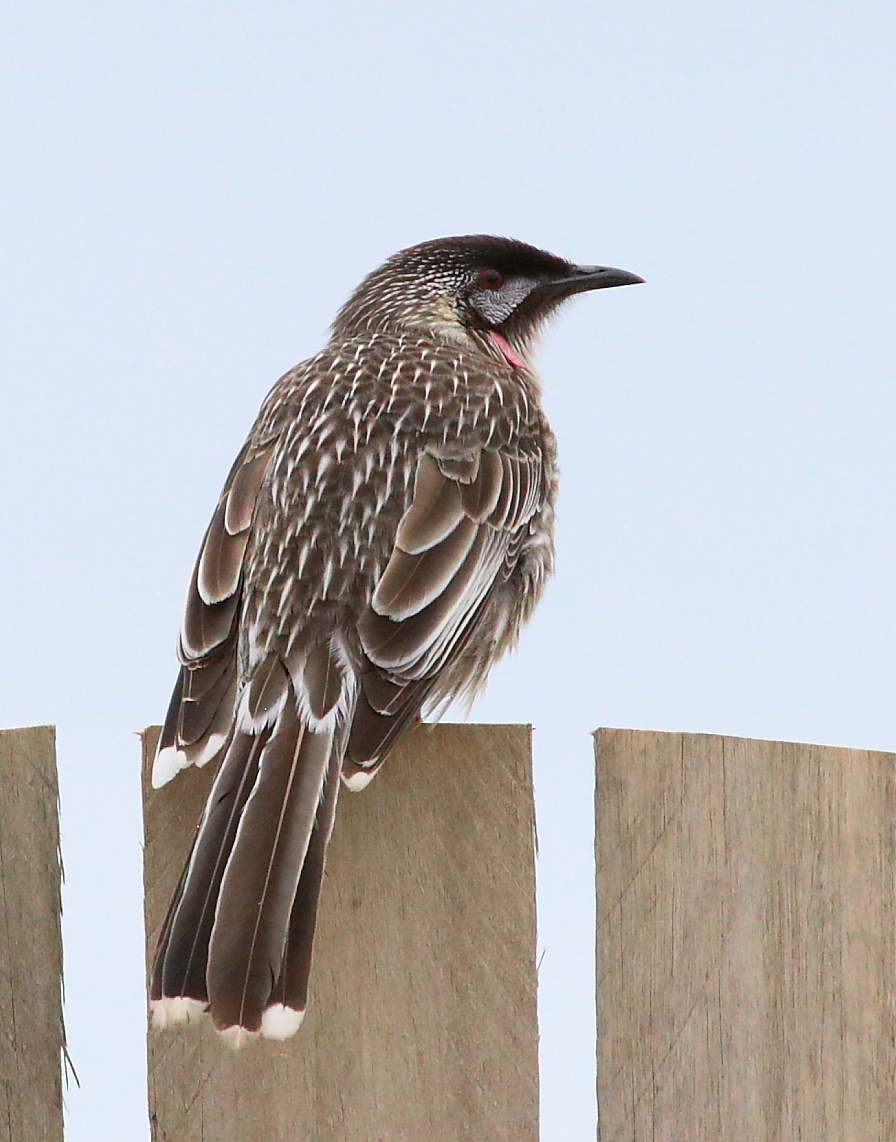
Slightly larger and less common than the Little Wattlebird, but just as pugnacious, noisy and active. Uses the same Cape habitat as the Little Wattlebird. The main distinguishing features are the red ‘wattle’ and white patch below the eye and pale yellow colourings on the belly.
White-fronted Chat (Epthianura albifrons)
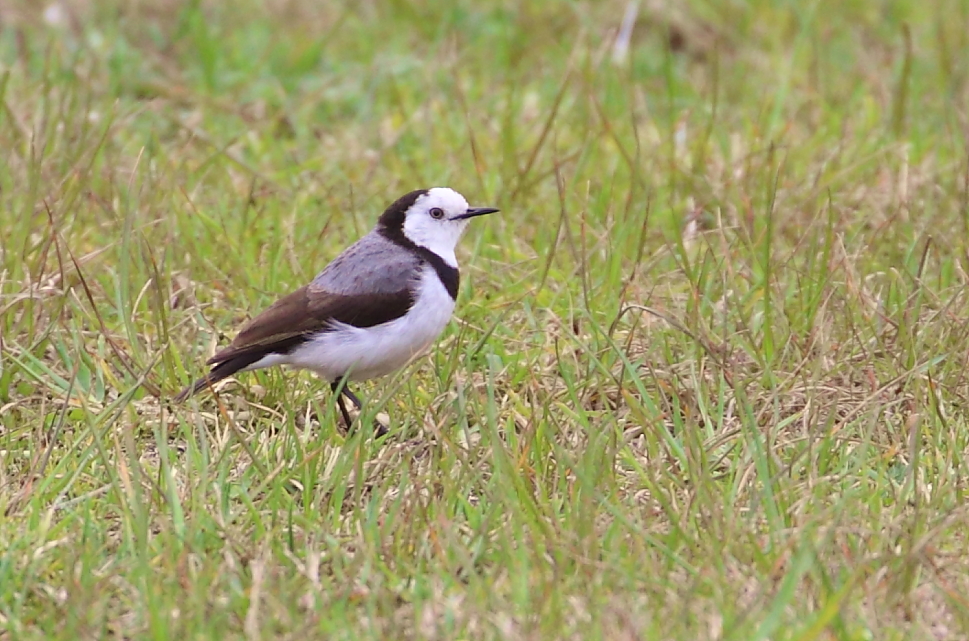

Lovely small birds first seen at The Cape in early October 2020 amongst the grasses feeding on insects along the central creekline and open grasses of lots. The male has a clean white face, black crown and breast band and the female has a grey head and more subdued grey colouring on the chest. Very fast and agile birds, who quickly scurry through the grasses chasing small insects, are a bit smaller in size than a House Sparrow. Classed in the honeyeater family, but lack the distinctive long, curved bill and are not nectar feeders.
